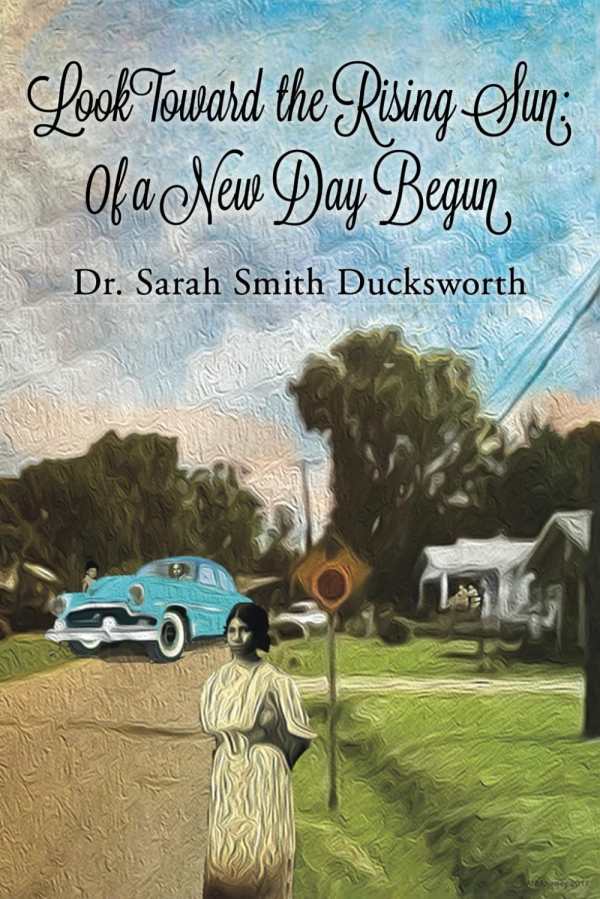It looks like you've stumbled upon a page meant to be read by our code instead of viewed directly. You're probably looking for this page.

Look toward the Rising Sun
Of a New Day Begun
Look toward the Rising Sun is a striking historical novel about growing up Black and middle class in the Jim Crow era.
In Sarah Smith Ducksworth’s historical novel Look toward the Rising Sun, a Black girl comes of age in Jackson, Mississippi, against the background of the civil rights movement.
Lizzie is the youngest of three sisters living the good life in a close-knit Black neighborhood. On the way to visit their cousins in New Orleans, she and her sisters crochet doilies in their father’s new air-conditioned sedan. But then two white men posing as sheriffs pull them over and rob the family. Lizzie’s father assumes a submissive demeanor to increase the odds that his family will get away safely; the girls are shocked, and Lizzie’s belief that she lives in a world that loves her dissipates. Looking back on the incident as an adult, she says it “shattered my sense of wholeness and altered my view of myself as well as my view of my parents.” But she also comes to realize that her father just knew how to survive under Jim Crow.
Intertwining Lizzie’s charming childhood voice with her wiser adult perspective, the book does an exceptional job of establishing the setting and mood. The prose includes catching period details and insights, such as that after the incident with the phony sheriffs, “no music played on the radio. The colored DJ had deserted us.” There are lighter details too: in New Orleans, the children hear jazz, visit the French Quarter on a streetcar, and eat popcorn and drink strawberry soda at the circus; they also visit Lincoln Park, the “Coney Island of the South.”
The characterizations are also thorough, devoting attention to people’s voices, gestures, styles, and individual obsessions. Lizzie’s cousin Walt, for example, hangs back when Lizzie’s family arrives in New Orleans; once he feels comfortable with them, he ends up telling them his life story, prompted by the question of why he took his wife’s last name. Walt also sometimes passes for white and brags about the many times he “put one over” on white businesspeople to get the best products, the best rates, and the best service for himself and his Black family and friends.
While the story proper traces Lizzie’s move into young adulthood, it also includes reflections on over a hundred years of her ancestors’ struggles. Since she is a child when the book opens, the family history is told to her by older relatives. When these elders are not interrupted, the book’s pace quickens to match their recitations. But people’s expository exchanges are less natural in tone; when more than one person is involved in discussing family lore or the history of the region, the pace slows and the tone is more stilted.
The novel captures a moment in history when Black families navigated threats of racism while encouraging each other toward safety, higher education, and affluence. To become an adult, Lizzie must learn to understand this complex, often contradictory environment.
The foundation of a family’s love helps an innocent child thrive in Look toward the Rising Sun, a striking historical novel about growing up Black and middle class in the Jim Crow era.
Reviewed by
Michele Sharpe
Disclosure: This article is not an endorsement, but a review. The publisher of this book provided free copies of the book and paid a small fee to have their book reviewed by a professional reviewer. Foreword Reviews and Clarion Reviews make no guarantee that the publisher will receive a positive review. Foreword Magazine, Inc. is disclosing this in accordance with the Federal Trade Commission’s 16 CFR, Part 255.